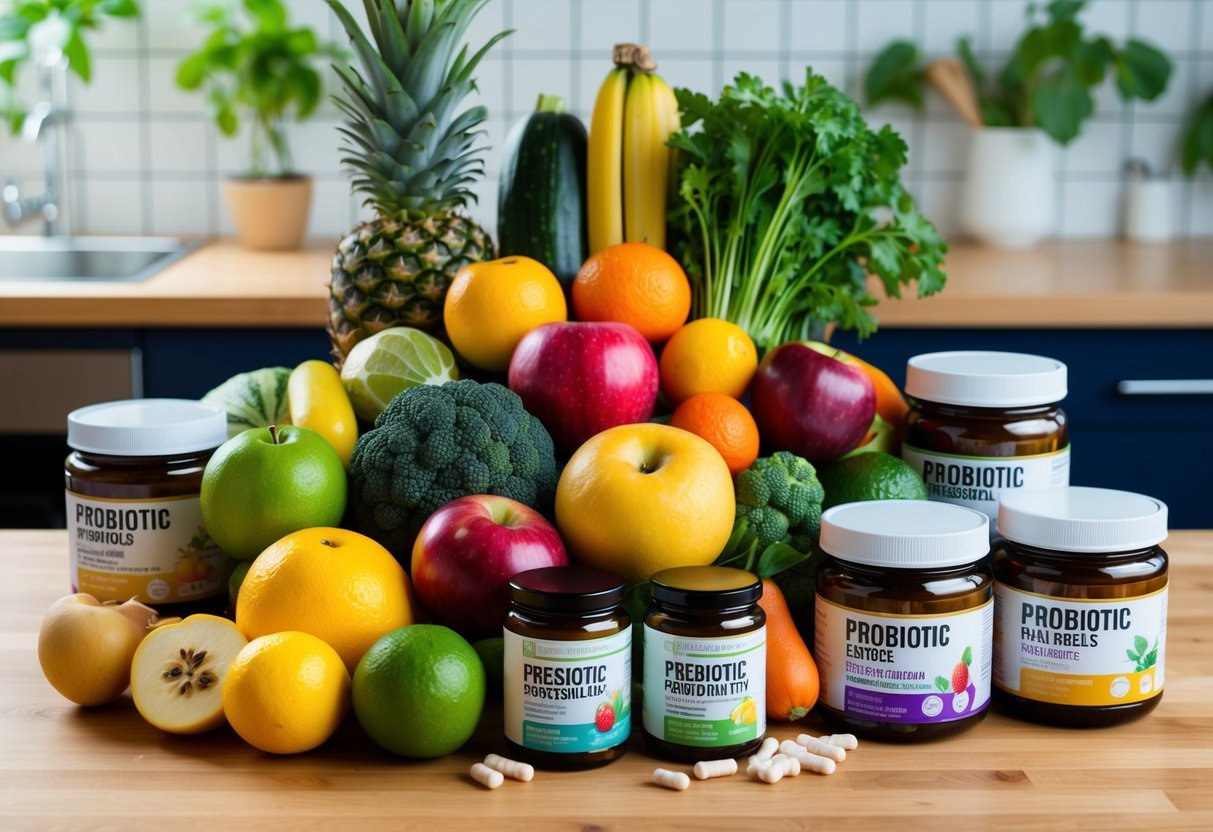DIY Probiotic Smoothies: Gut-Friendly Recipes for Better Digestion
Essential Ingredients for Probiotic Smoothies
Creating probiotic smoothies requires specific ingredients that enhance their gut-friendly qualities. Key components include choosing suitable probiotic strains, selecting optimal bases, and incorporating high-fiber fruits and vegetables.
Choosing the Right Probiotic Strains
Selecting the appropriate probiotic strains can make a significant difference in the effectiveness of a smoothie for gut health. Look for strains like Lactobacillus and Bifidobacterium, which are well-researched for their digestive benefits. These strains help maintain a healthy gut flora balance, contributing to improved digestion and immunity. Consumers might find these in the form of capsules or powders, which can be easily integrated into the smoothie mix. It’s essential to follow dosage recommendations on packaging to ensure proper intake.
Optimal Bases for Probiotic Smoothies
The base of a probiotic smoothie is crucial as it affects both flavor and texture. Coconut water is a popular choice due to its hydrating properties and natural sweetness. It offers a refreshing taste while complementing the probiotics. Alternatively, kefir or yogurt can be used for a creamier texture and added probiotic content. Non-dairy alternatives, such as almond or oat milk, also provide a smooth base without compromising on nutrition. The choice depends on personal preferences, whether a lighter or creamier consistency is desired.
High-Fiber Fruits and Vegetables
High-fiber ingredients play a vital role in enhancing the benefits of probiotic smoothies. Bananas are widely appreciated for their natural sweetness and high fiber content, which supports digestive health. Mangoes add a tropical flavor while contributing both fiber and essential vitamins. These fruits, combined with a selection of leafy greens like spinach or kale, boost the nutritional profile. Fiber serves as a prebiotic, feeding the good bacteria in the gut, thus complementing the effects of probiotics and promoting a balanced digestive system. Integrating these elements ensures a wholesome and tasty smoothie.
Integrating Prebiotics

Integrating prebiotics into your smoothie can enhance gut health by nourishing beneficial bacteria. Understanding how prebiotics and probiotics work together offers a better approach to promoting digestive wellness.
Synergy of Prebiotics and Probiotics
Prebiotics and probiotics work hand-in-hand to promote a healthy gut. Prebiotics are non-digestible fibers that feed probiotics, which are beneficial bacteria. When prebiotics are consumed, they reach the gut unchanged and become a food source for probiotics, helping them thrive. This symbiotic relationship aids in improving overall digestion by maintaining a balanced gut microbiome. Adding prebiotic-rich ingredients to smoothies not only supports digestive health but can also enhance nutrient absorption and boost immune function.
High-Quality Prebiotic Additions
To make a smoothie rich in prebiotics, consider ingredients like bananas, onions, and garlic. Each of these provides valuable prebiotic fiber. Bananas, with their mild taste, blend well with various fruits and vegetables. Onions and garlic offer a mild, savory depth, suitable for more adventurous smoothies. Another excellent addition is chicory root, which has a high inulin content, making it an effective prebiotic. Including diverse prebiotic sources can cater to different flavor preferences while ensuring a gut-friendly impact.
Gut Health and the Digestive System
A balanced gut is vital for digestion and overall health. A well-functioning digestive system can alleviate common issues like bloating and constipation and support better nutrient absorption.

